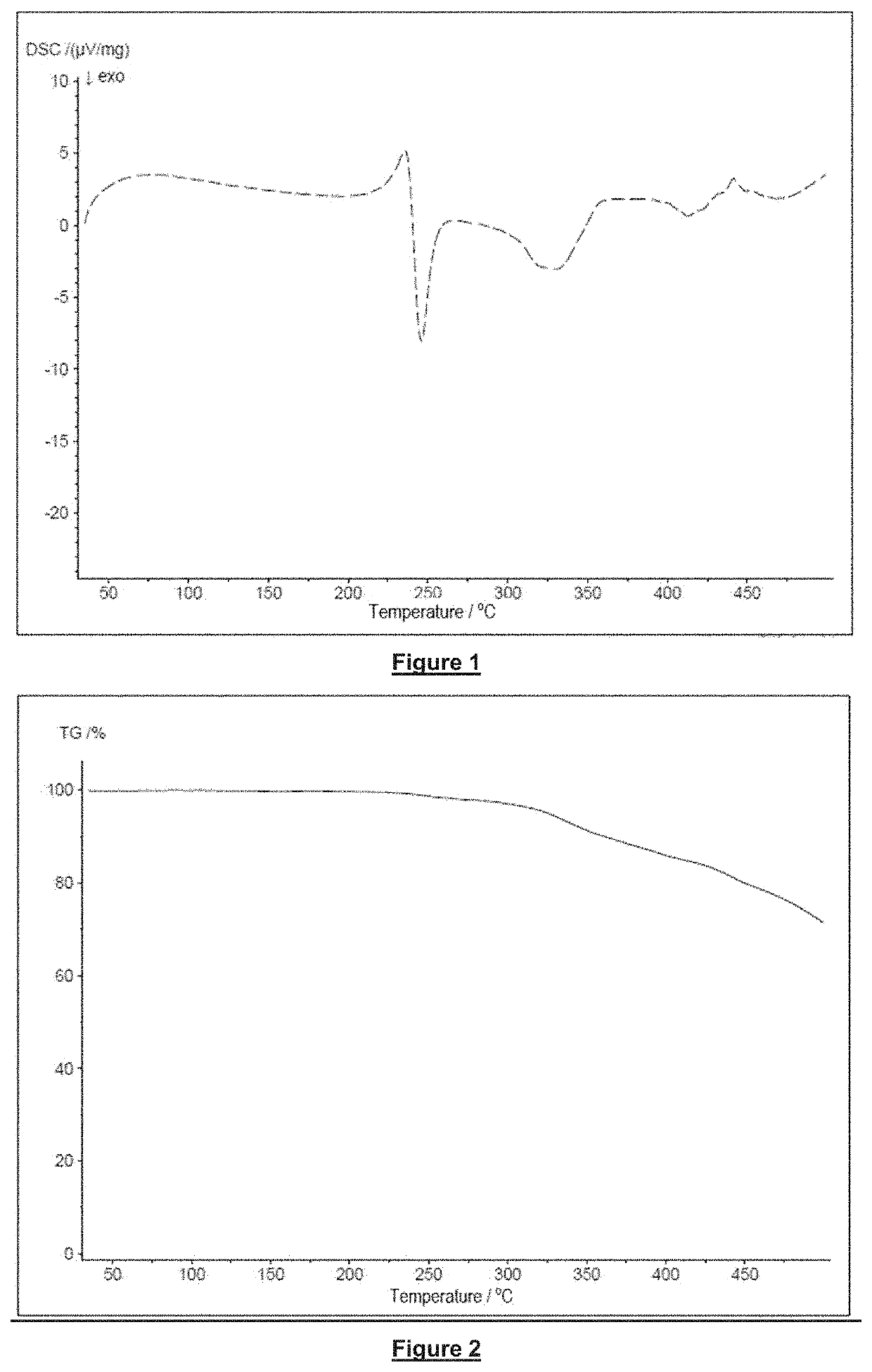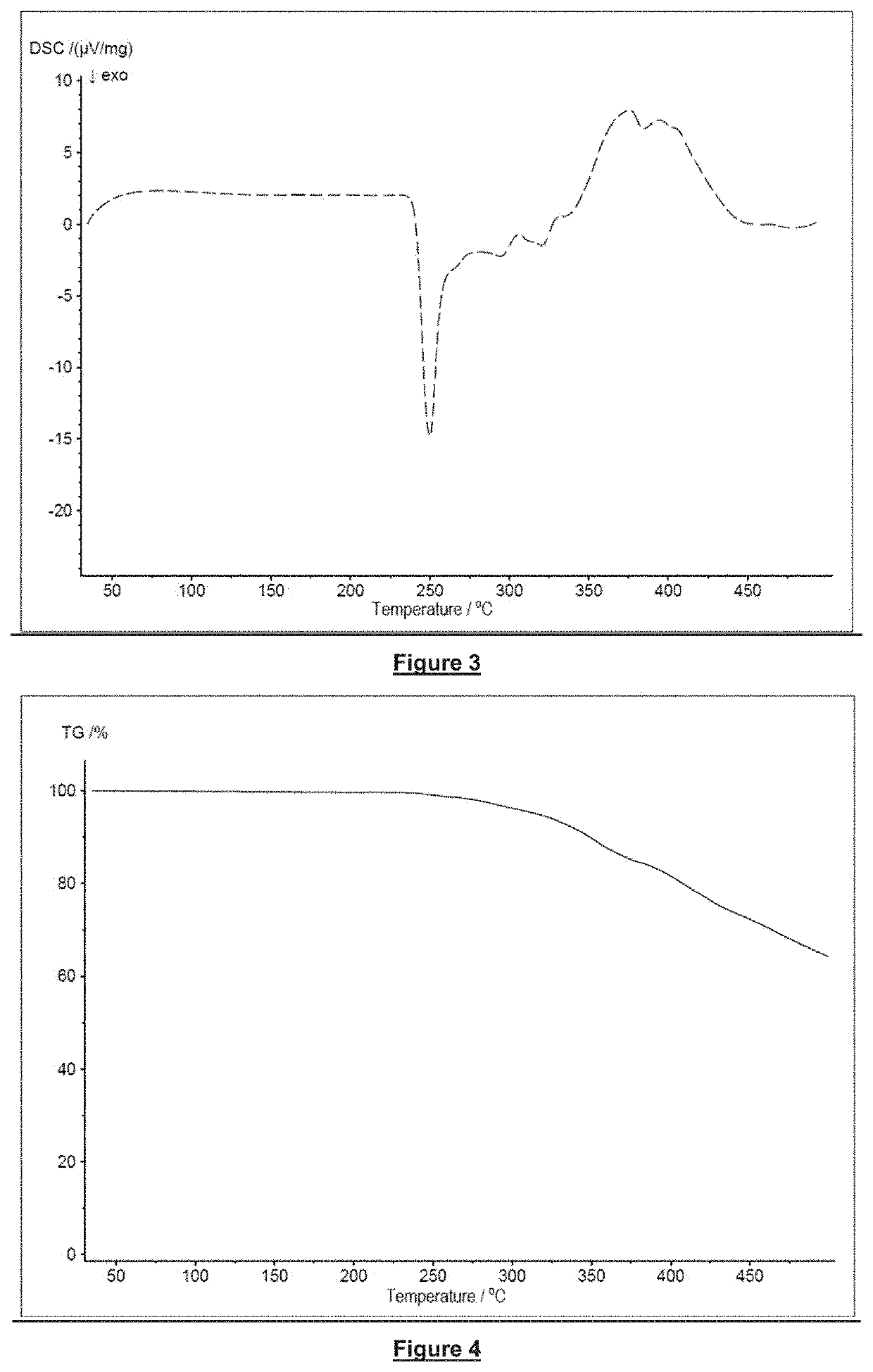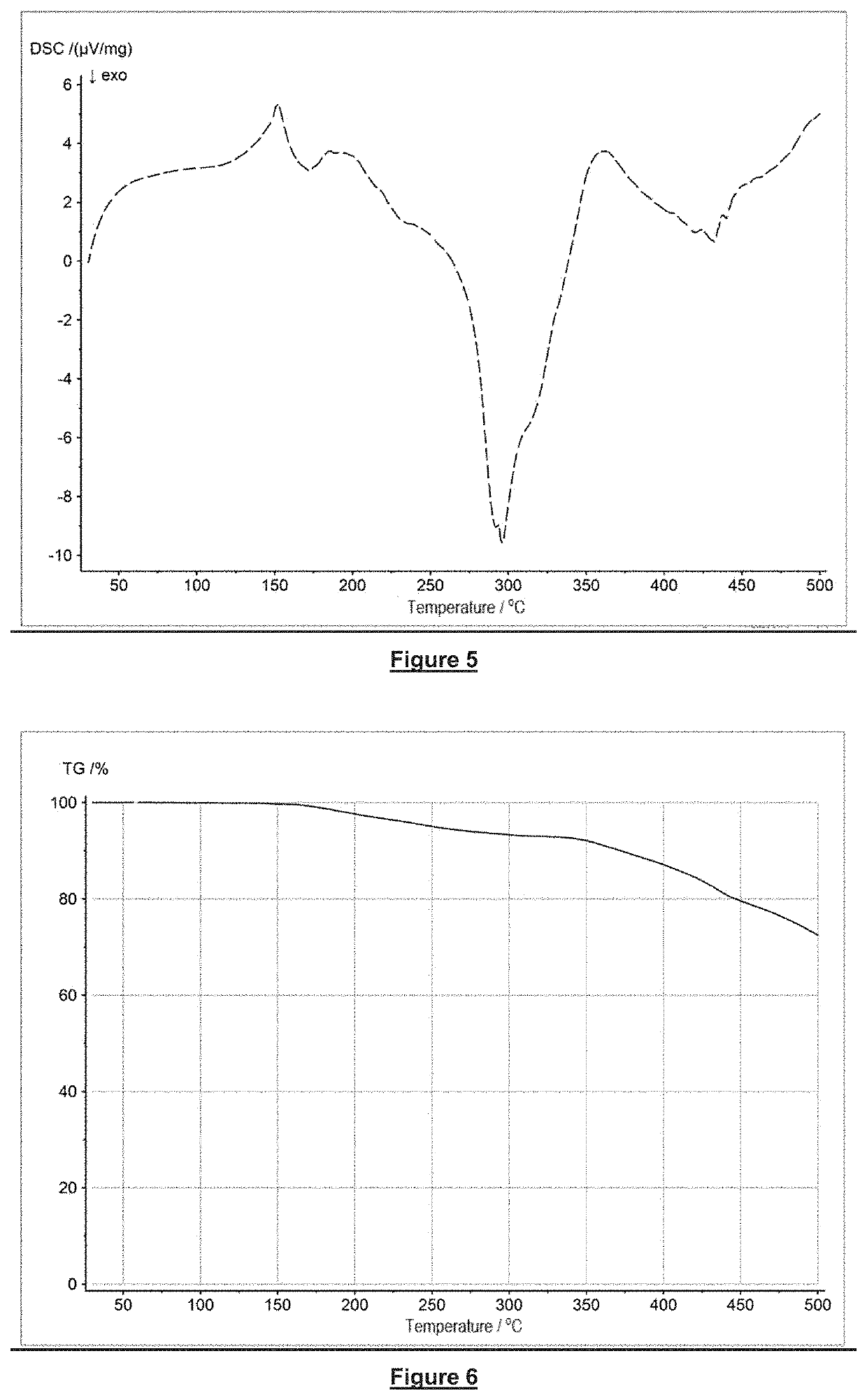Polymer composition containing a phosphonate flame retardant
- Summary
- Abstract
- Description
- Claims
- Application Information
AI Technical Summary
Benefits of technology
Problems solved by technology
Method used
Image
Examples
examples
[0055]The invention will now be explained in more detail with the aid of specific embodiments of flame retardants in accordance with the invention, examples of the production of compositions in accordance with the invention, as well as with the aid of examples of flame retardants and with the aid of the accompanying figures.
Specific Embodiments of Flame Retardants in Accordance with the Invention
Embodiments with Dimethyl Groups
[0056]
# X R3 R4 R5 R61—O—HHHH2—O—ethylethylethylethyl3—O—butylbutylbutylbutyl4—O—HNaNaNa
Embodiments with Diethyl Groups
[0057]
# X R3 R4 R5 R65—O—HHHH6—O—ethylethylethylethyl7—O—butylbutylbutylbutyl8—O—HNaNaNa
Embodiments with Morpholine, MOMP
[0058]
# X R3 R4 R5 R6 9—O—HHHH10—O—ethylethylethylethyl11—O—butylbutylbutylbutyl12—O—HNaNaNa
Embodiments with Piperazine, PMP
[0059]
# X R3 R4 R5 R613—O—HHHH14—O—ethylethylethylethyl15—O—butylbutylbutylbutyl16—O—HNaNaNa
Embodiments with 1,3,5˜Triazine Cy...
examples of
Production of Compositions in Accordance with the Invention
[0069]Starting materials:
NameManufacturerPurity / MnCAS4-formylmorpholineAlfa Aesar 99%4394-85-8N,N-dimethylformamideMerck KGaA≥99%68-12-2Phosphonic acidAlfa Aesar 99+%4394-85-8Acetic acid anhydrideMerck KGaA≥98%108-24-7Methylene diphenyliso-Sigma Aldrich Mn~3409016-87-9cyanate (MDI)PolyolSigma AldrichMn~40009082-00-2PentaneSigma Aldrichanhydrous, ≥99109-66-0Ethylene glycolSigma Aldrichanhydrous, 99.8107-21-1
[0070]Further flame retardants:[0071]Budit 240: phosphorus-containing, partially crosslinked polyacrylate, produced in accordance with Example 1 of WO 2014 / 124933[0072]Budit 315: melamine cyanurate from Chemische Fabrik Budenheim KG[0073]Budit 342: melamine polyphosphate from Chemische Fabrik Budenheim KG[0074]Budit 667: intumescent flame retardant system from Chemische Fabrik Budenheim KG based on ammonium polyphosphate[0075]TCPP: tris(2-chloroisopropyl)phosphate, TCPP, from Sigma Aldrich (CAS: 13674-84-5)[0076]OP 550: Ph...
example 6
of Morpholine Methylamino Di-DOPO (MOM-DOPO2)
[0088]
NameMPBPMDOPO (Metadynea DOP11 S25)~120° C.~400° C.216.18 g / mol4-FM (AlfaAesar >98%) 20° C. 240° C.115.13 g / molAc2O (Merck >98%) −73° C. 139° C.102.09 g / molMOM-DOPO2n.a.n.a.529.47 g / molWater 0° C. 100° C. 18.02 g / molAcetic acid 17° C. 118° C. 60.05 g / mol
[0089]The reaction was a condensation reaction in which the product MOM-DOPO2 was formed, from the formyl function on the 4-formylmorpholine (4-FM) and from the P—H groups of the DOPO molecules, with the elimination of H2O. To this end, 40 g of DOPO was dissolved in 100 mL of acetic acid anhydride (Ac2O) in a 250 mL flask and the mixture was heated to 120° C. When the temperature had been reached, 10 g of 4-FM was added. After 5 hours, it was neutralized with 80 mL of water and allowed to cool in the temperature of the environment. After cooling, a white solid precipitated out which was filtered off and washed with water. Acetic acid was formed as a further by-product.
Example 7: Syn...
PUM
| Property | Measurement | Unit |
|---|---|---|
| Temperature | aaaaa | aaaaa |
| Percent by mass | aaaaa | aaaaa |
| Percent by mass | aaaaa | aaaaa |
Abstract
Description
Claims
Application Information
 Login to View More
Login to View More - R&D
- Intellectual Property
- Life Sciences
- Materials
- Tech Scout
- Unparalleled Data Quality
- Higher Quality Content
- 60% Fewer Hallucinations
Browse by: Latest US Patents, China's latest patents, Technical Efficacy Thesaurus, Application Domain, Technology Topic, Popular Technical Reports.
© 2025 PatSnap. All rights reserved.Legal|Privacy policy|Modern Slavery Act Transparency Statement|Sitemap|About US| Contact US: help@patsnap.com



